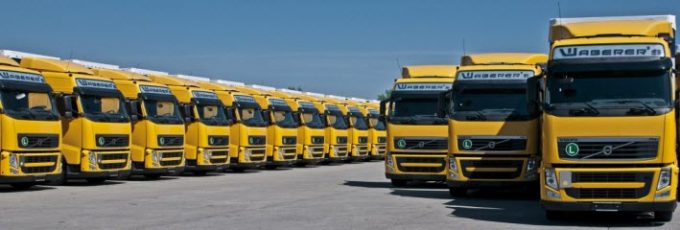Maersk expects profit hike on strong demand and Red Sea crisis
AP Møller-Maersk has raised its full-year earnings guidance amid “strong container market demand”. The Danish ...
GM: RAISING THE ROOF GGM: IN FULL THROTTLE GZIM: MAERSK BOOST KNIN: READ-ACROSSMAERSK: NOT ENOUGHMAERSK: GUIDANCE UPGRADEZIM: ROLLERCOASTERCAT: HEAVY DUTYMAERSK: CATCHING UP PG: DESTOCKING PATTERNSPG: HEALTH CHECKWTC: THE FALLGXO: DEFENSIVE FWRD: RALLYING ON TAKEOVER TALKODFL: STEADY YIELDVW: NEW MODEL NEEDEDWTC: TAKING PROFIT
GM: RAISING THE ROOF GGM: IN FULL THROTTLE GZIM: MAERSK BOOST KNIN: READ-ACROSSMAERSK: NOT ENOUGHMAERSK: GUIDANCE UPGRADEZIM: ROLLERCOASTERCAT: HEAVY DUTYMAERSK: CATCHING UP PG: DESTOCKING PATTERNSPG: HEALTH CHECKWTC: THE FALLGXO: DEFENSIVE FWRD: RALLYING ON TAKEOVER TALKODFL: STEADY YIELDVW: NEW MODEL NEEDEDWTC: TAKING PROFIT

Waberer’s Optimum Solution’s “monumental” growth in 2017 came as a result of organic growth and its acquisition strategy.
The Hungary-based haulier reported 17.8% growth in revenue over the year, bringing in some €674m and a near 38% jump in profits, which hit €29.7m.
Chief executive Ferenc Lajko told The Loadstar: “Our strong results demonstrate success in our strategy to grow organically, with support from efficiency gains and adoption of cutting-edge technologies.
“We have used resources like fuel in a more rational manner, which means savings in consumption reached 4%, thanks to training based on driving style analysis.”
The carrier also saw a reduction in empty mileage, with its truck:load ratio raised to above 91%, while repair and maintenance costs also reduced in the final quarter.
Acquiring Polish firm Link also played a pivotal role in the growth, with 430 trucks added to the Waberer’s fleet – a sizeable part of the 18% fleet expansion over the year.
“Waberer’s [through the acquisition] not only obtained an important market, but a remarkable client portfolio and infrastructure,” said Mr Lajko.
“The [ebit] increase was partly driven by the weak base, due to one-off costs in cost of goods sold in a generally low-season quarter with low capacity usage.
“Underlying trends are unchanged, as margin gains reflect fuel efficiency and admin cost levels that offset margin dilution of a changing business mix in favour of freight forwarding.”
Further fleet expansion is expected this year, Mr Lajko noting that it has some 100 vehicles on order for its Polish network alone.
While he did not confirm the operator had benefited directly from the capacity constraints in air freight, he did say the company had experienced “increased” customer demand.
“Economic development after the financial crisis gave a swing to road transport and we could utilise our capacity and well-built up network on Europe’s roads,” he added.
“We are the market leader in FTL transport and our fleet operates with high efficiency, boosting our competitiveness significantly against other transport methods.”
Comment on this article